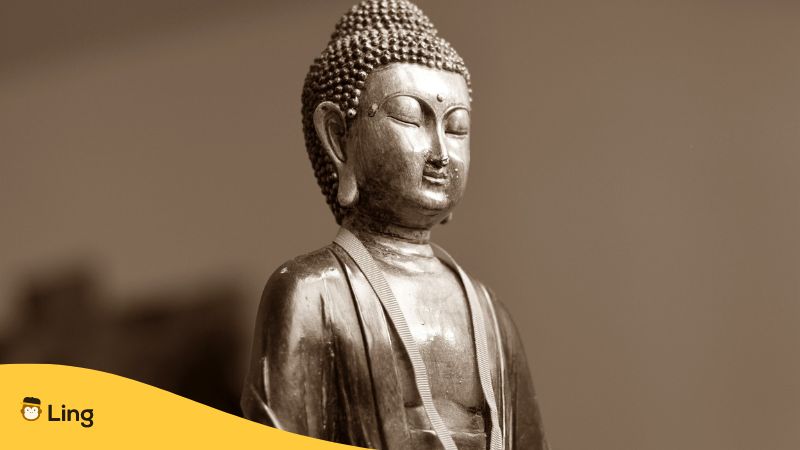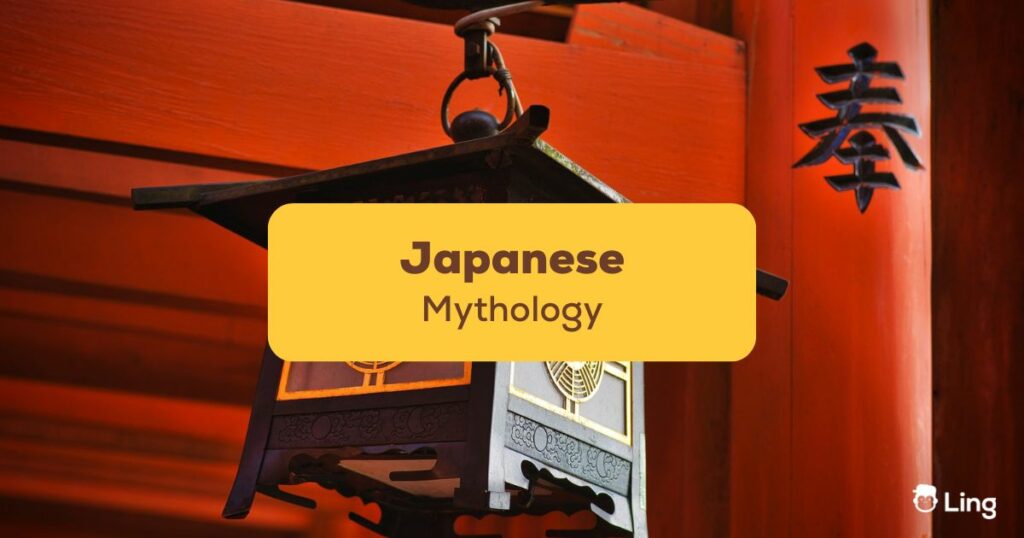Japanese mythology is fascinating to read. Since ancient times, Japanese culture has placed great emphasis on teaching and passing down great Japanese folklore to the younger generations. The life lessons woven into Japanese mythology have held up nicely, with many themes like respect for nature and your fellow neighbor. These wonderful tales involve gods, supernatural beings, and legendary creatures.
These fascinating tales usually stem from a combination of Shinto and Buddhist traditions. For the main characters in Japanese mythology, you’ll find powerful gods and goddesses and millions of kami (神, “holy/divine powers” in Japanese) that are associated with forces of nature, geographical features, and, of course… spirits!
Table Of Contents

Tales Of Japanese Mythology
Japanese mythology has played a significant role in shaping Japan’s traditions and culture. They are deeply ingrained in the collective consciousness and continue to influence various aspects of Japanese society, from art and literature to festivals and rituals.
1. Kojiki (古事記): The Ultimate Japanese Mythology Book
The first book written in Japan, dating all the way back to 712, is called the Kojiki (古事記) or Record of Ancient Matters. This precious book of Japanese culture chronicles the events from the early “Age of the Gods” up until the era of Empress Suiko (推古天皇, Suiko-tennō, 554-628). The collection of tales was compiled by the nobleman and bureaucrat, Ō no Yasumaro (太安万侶, d. 723), as a gift to present to the Empress Genmei (元明天皇 Genmei-tennō, 660-721) in 712.
2. The Creation Myth
This legend from the Kojiki states that first, there was a huge black void in the dark and silent universe of nothingness. Then, particles began to shift around and create sound. The light as a feather particles rose into the sky and formed the heavens, where the first three gods appeared—the Three Creating Deities: The Spirit Master of the Center of Heaven, The August Wondrously Producing Spirit, and the Divine Wondrously Producing Ancestor.
From the remaining particles, the rest floated down and created a mass of land that took millions of years to solidify into what we should be super familiar with… the Earth! As life on Earth began to take shape, gods Izanagi (イザナギ, name meaning: “he who invites”) and his sister Izanami (イザナミ, name meaning: “she who invites”) were summoned to rule over the earthly inhabitants shrouded in chaos.
3. The Sun, The Moon, And The Wind
Shortly after the creation began, Izanami died during childbirth. Izanagi was so distraught after her death that he journeyed to the underworld, Yomi (黄泉), to bring her back. But Izanagi was too late—Izanami’s body had already started to decompose and rot.
Izanagi returned to the earth alone, and then three more deities appeared: the sun goddess, Amaterasu (天照); the moon god, Tsukuyomi (月読); and the god of the wind, Susanoo no Mikoto (須佐之男命).
4. The Tale Of Emperor Jimmu
According to legend, Jimmu (神武天皇, Jinmu-tennō) was the great-grandson of sun goddess Amaterasu and the first emperor of early Japan.
Fun fact: there is actually no evidence that Jimmu ever really existed! Besides the mention of his name in the Kojiki and Nihon Shoki ((日本書紀, the second-oldest book of Japanese history), scholars widely agree that the founding of the Yamato dynasty around 660 BC is just a myth.
How Do You Say Mythology In Japanese?
In Japanese, mythology is called shinwa (神話).
Japanese Vocabulary Related To Mythology
Let’s take a look at some more vocabulary that’s related to discussing the gods and goddesses of Japanese folklore!
| English | Japanese | Romanization |
|---|---|---|
| The first gods of Japan | 別天津神 | Kotoamatsukami |
| Emperor of Japan | 太上天皇 | Tenno |
| Story | 話 | Hanashi |
| Record of ancient matters | 古事記 | Kojiki |
| God | 神 | Kami |
| The human world | 人間界 | Ningenkai |
| The spirit world (or heaven) | 霊界 | Reikai |
| The demon world | 魔界 | Makai |
| Hell | 冥界 | Meikai |
Frequently Asked Questions About Japanese Mythology
1. Who Are The Four Japanese Gods?
The Four Gods (also known as the Four Guardians and Four Auspicious Beasts) are creatures separated by cardinal directions. They are 1) the Black Tortoise of the North, 2) the Azure Dragon of the East, 3) the Vermilion Bird of the South, and 4) the White Tiger of the West.
2. What Religions Are There In Japan?
In Japan, the primary religions practiced in Japan are Shinto (the country’s earliest religion), Buddhism, and Confucianism. Christianity, while still present in Japan, has only played a minor part in Japanese religious tradition.
3. What Is The Most Famous Japanese Myth?
Without a doubt, the sun goddess Amaterasu is the most well-known of Japanese folklore. In fact, most Japanese mythology touches on the fierce rivalry against her brother, the god of storms, Susanoo no Mikoto. In an iconic Japanese legend that is considered to be the most famous, Amaterasu hid in a cave after a squabble with Susanoo no Mikoto, plunging the world into darkness. With the absence of the sun goddess, evil spirits began to roam the earth and terrorize humanity.
If you would like to know more about Japanese myths, check out our post on Japanese folktales!

Closing Words
Wouldn’t it be great to read and understand these tales from Japan about gods, supernatural beings, and legendary creatures in their native Japanese language? It would be super helpful to learn Japanese and know related vocabulary and phrases so you can impress your family and friends by sharing a fairy tale or two!
Still hungry for more Japanese mythology? If you’re an anime lover, you’ll be stoked to check out this awesome article about the connections between the Japanese myths in Naruto! It’s awesome to see just how present the lessons of historical Japanese deities and Buddhist traditions drive our contemporary world and exist in our media.
Until next time!



































































